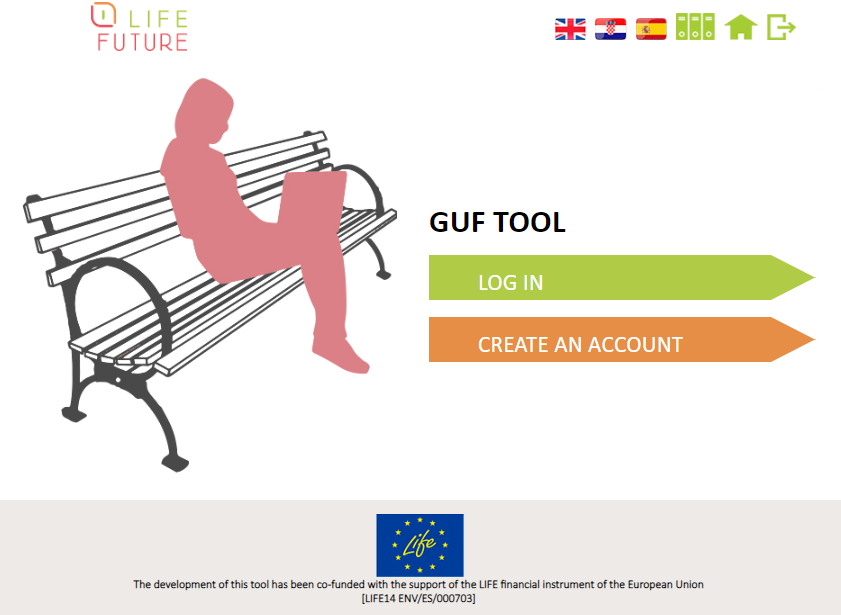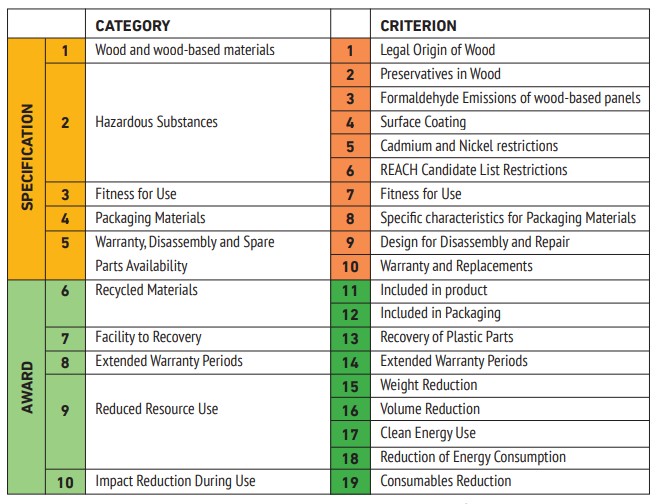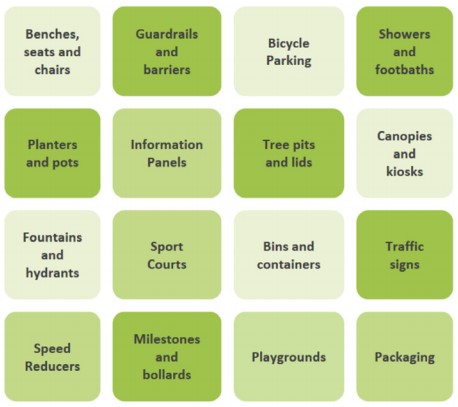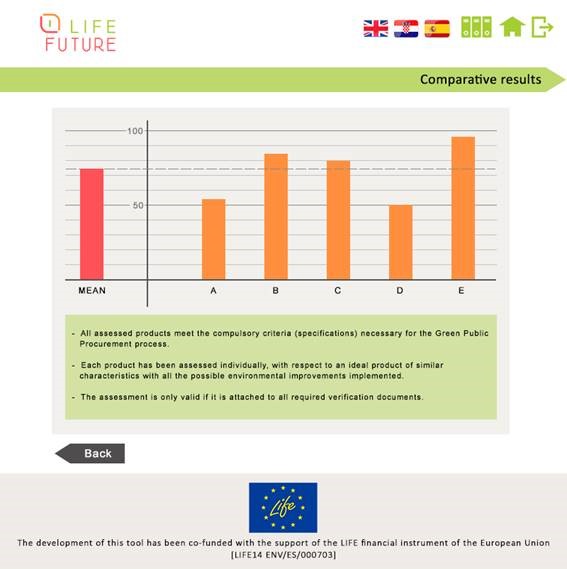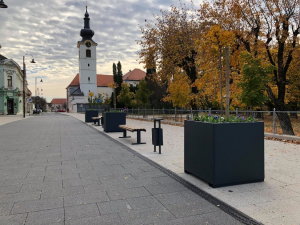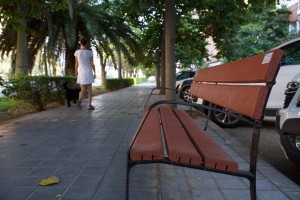The Guf Tool is an online tool developed through the Life Future Project to select and assess environmental criteria for urban furniture in green public procurement and to compare its impact.
The Guf Tool within the Life Future Project
The European project LIFE FUTURE (‘Sustainable Urban FUrniTURE: Tool Design to Perform Environmental Assessments in the Green Procurement Framework”) aimed to enhance the green public procurement of urban furniture products through the implementation of specific environmental criteria. With this aim, an online tool was developed to select criteria and assess the environmental impact of different urban furniture products in a simple but scientifically rigorous manner: the GUF Tool (“Green Urban Furniture Tool”).
The European project LIFE FUTURE was carried out between 2015 and 2018 in Belgium, Croatia and Spain (especially the Region of Valencia). The beneficiaries of this project, which was funded by the European Union through the LIFE Environment and Resource Efficiency programme, were:
AIMPLAS, Plastics Technology Centre: based in Paterna, Spain, AIMPLAS coordinated the project and participated in the selection of environmental criteria and urban furniture products, operation and validation of the tool and dissemination of the results.
ACR+ (Association of Cities and Regions for sustainable Resource management): based in Brussels, Belgium, this body was responsible for the dissemination plan and interaction with other projects.
AIJU (Technological Institute for Children’s Products and Leisure): based in Alcoi, Spain, the role of AIJU was to programme and design the online tool and validate its operation, in addition to disseminating tasks and preparing promotional materials.
LAS NAVES: based in Valencia, Spain, this innovation centre was responsible for preparing and demonstrating the tool through Valencia City Council, the green public procurement of products and the socioeconomic analysis of the project.
Koprivnica City Council, Croatia: the council was an active beneficiary of the process to demonstrate green public procurement through use of the tool and was also responsible for translating the contents into Croatian.
Universitat Jaume I, Castellón, Spain: this university developed the methodology for weighting environmental impacts and analysed the results of the project from an environmental perspective. It was also responsible for internal tool programming.

The Guf Tool’s Methodology
The first task in developing the GUF Tool was to select and describe the criteria potentially applicable to urban furniture products and to select the type of products likely to meet these criteria.
The 40 criteria proposed to improve the environmental impact of furniture products, including the EU directives themselves and references to indoor and outdoor furniture, were narrowed down to 19. These criteria were grouped into different categories and defined in depth before being classified into specifications and awards criteria (i.e. mandatory and optional).
These environmental criteria were assigned to different urban furniture types, depending on their applicability. Urban furniture products that require energy to operate, such as streetlights, were excluded from this selection. The LIFE FUTURE project consortium chose 15 different urban furniture products, in addition to a packaging category, to which these19 environmental criteria were assigned.
Through these extensively defined criteria, which are assigned to each type of urban furniture product, public bodies can easily create a document with the criteria they want to include in an urban furniture tender and those that are potentially applicable. They simply log into the GUF Tool, choose the urban furniture product to be tendered, uncheck the criteria they want to exclude and create a PDF document with the criteria to be included in the tender documentation. The GUF Tool also provides a follow-up document to check products’ compliance with these criteria.
If the urban furniture product that a public body wishes to purchase has selected any of these mandatory criteria in the tender, its non-compliance discards it to be ineligible for the tender. Optional criteria, on the other hand, are used to support the environmental assessment process and complement the mandatory criteria. Depending on whether the tender issued by the public body includes only mandatory criteria or both mandatory and optional criteria, it is labelled ‘Silver GUF’ or ‘Gold GUF’, respectively.
The tender issued by the public body can be viewed in the GUF Tool. Urban furniture manufacturers and suppliers can therefore log into GUF Tool, search for active tenders by product type or location, and offer their products according to the criteria established.
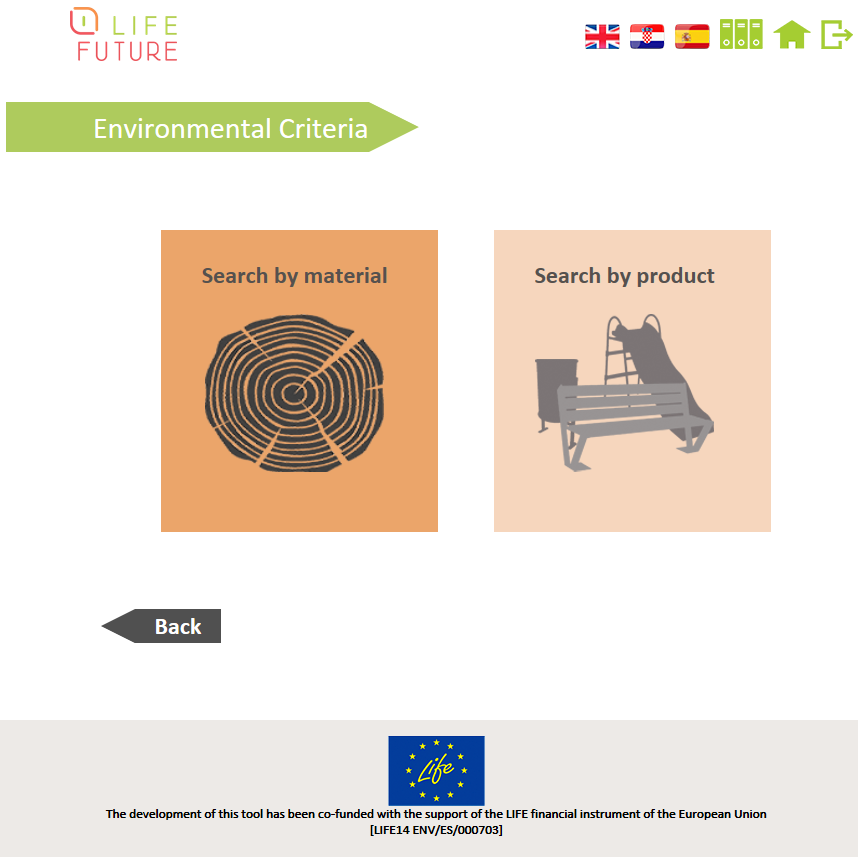
Companies that participate in tenders by offering their products must fill in a form available in the GUF Tool, where they are required to include numerical values and documentation to verify their products’ compliance with the criteria.
The data provided by the supplier allows the GUF Tool to assess the environmental impact of each product by means of a life-cycle assessment (LCA) and the weighting of these impacts, thus resulting in a score worth a maximum of 100 points that reveals the product’s environmental advantages.
The GUF Tool works behind a visible interface and performs these calculations based on the multi-criteria decision analysis method known as TOPSIS (Technique for Order of Preference by Similarity to Ideal Solution), by taking a result considered ideal for each criterion as a reference point.
When a product is given a score, urban furniture manufacturers can find out how close their product came to being the most environmentally friendly option and how others fared, although offers are anonymous. Public bodies can directly select products with a lower environmental impact as a criterion in addition to economic considerations, which are not assessed by the GUF Tool.
Results
Over the course of the LIFE FUTURE project, a range of urban furniture products were purchased through the GUF Tool for the cities involved in the project:
- 71 benches manufactured from recycled plastic in Valencia, Spain.
- 2 benches, 3 planters and 2 litter bins in Koprivnica, Croatia.
The inclusion of environmental clauses in the urban furniture procurement process reduces the environmental impact compared to procurement processes that do not take account of these aspects; CO2 emissions were reduced by 40%, waste by 56% and non-renewable resources by 40%.
Acknowledgments
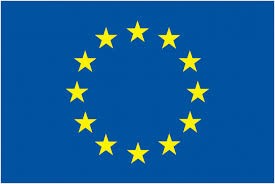 This project was co-funded with support from the LIFE financial instrument of the European Union [LIFE14 ENV/ES/000703] and from the regional government of Valencia through IVACE grants to strengthen the activity and develop the excellence of technology centres in the Region of Valencia [IMACID/2017/6].
This project was co-funded with support from the LIFE financial instrument of the European Union [LIFE14 ENV/ES/000703] and from the regional government of Valencia through IVACE grants to strengthen the activity and develop the excellence of technology centres in the Region of Valencia [IMACID/2017/6].
Text by Vicente B. Vert, a researcher in the Sustainability and Industrial Recovery Department at AIMPLAS


